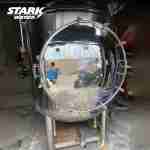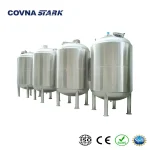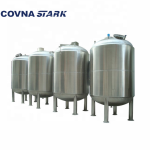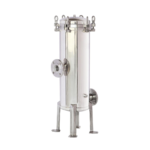Stainless steel mixing tanks are widely used across industries such as food processing, pharmaceuticals, cosmetics, and water treatment. Their resistance to corrosion, easy cleanability, and ability to withstand temperature and chemical variations make them a preferred solution for mixing, blending, and reaction-based processes.
Whether you're operating a 500L pilot tank or managing a customized 5000L industrial-grade system, understanding how to operate and maintain your stainless steel mixing tank is essential to optimize efficiency, ensure product safety, and extend equipment lifespan.
Proper Usage Guidelines for Mixing Tanks
To maximize performance and ensure safe operation, it’s critical to follow proper procedures when using your stainless steel mixing tank. Different industries have different standards, but the fundamental principles remain consistent:
- Pre-Use Cleaning: Always sanitize the tank before introducing any product—especially for food-grade or pharmaceutical applications.
- Check Sealing and Gaskets: Inspect sealing rings and joints to ensure airtight and leak-free operation during mixing.
- Load Ingredients Correctly: Add liquids before powders to prevent clumping, and avoid overfilling to maintain mixing efficiency.
- Monitor Mixing Speed: Use recommended agitator speeds depending on the product viscosity. High-speed mixing for light liquids; low-speed agitation for high-viscosity fluids.
- Temperature Management: Use integrated jackets for heating or cooling when necessary—especially in chemical or dairy processes.
STARK tanks support high customization—from open-top manual tanks to jacketed and motorized industrial stainless steel mixing systems with programmable controllers.
Routine Maintenance and Cleaning Best Practices
Maintaining your stainless steel mixing tank regularly not only preserves hygiene but also reduces downtime and operational risk. Here’s a practical guide to maintenance and cleaning routines:
Daily & Weekly Tasks
- Rinse the inner tank surface thoroughly after each batch to prevent material residue and bacterial growth.
- Check motor mounts, gaskets, and clamps for early signs of wear or misalignment.
- Inspect outlet valves to ensure no clogging or backflow issues.
Monthly Maintenance
- Perform deep CIP (Clean-in-Place) or manual brushing with food-grade or process-specific detergents.
- Lubricate mixer shaft seals or motor parts (if applicable) as per manufacturer recommendations.
- Review weld seams and support legs for potential fatigue or micro-cracks in high-usage tanks.
Annual Checks
- Conduct pressure and leak testing if the tank is integrated into closed or pressurized systems.
- Schedule a full-service inspection for any jacketed or motorized components.
Investing in proper care can easily add 5–10 extra years of service life to your stainless steel mixing tank, especially in demanding industrial environments.
Conclusion: Reliable Operation Starts with Proper Use
Whether you're blending pharmaceutical ingredients, preparing chemical solutions, or processing food-grade liquids, a properly used and maintained stainless steel mixing tank plays a pivotal role in ensuring consistency, cleanliness, and operational safety.
By following a structured usage and maintenance plan, you can prevent contamination, reduce downtime, and extend your tank’s lifecycle by years. STARK’s stainless steel solutions are built to meet demanding industry standards and can be customized for unique operational needs.
Interested in exploring more solutions? Here are some related products you may find useful:
- Stainless Steel Pressure Tank – Ideal for sealed system pressurization
- Customized Mixing Water Tank – Tailored capacities and configurations
- Precision Filter Housing – Ensure particle-free input into your mixing system





